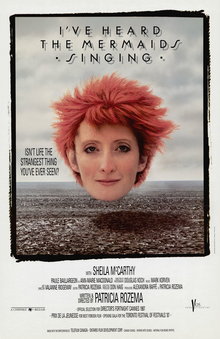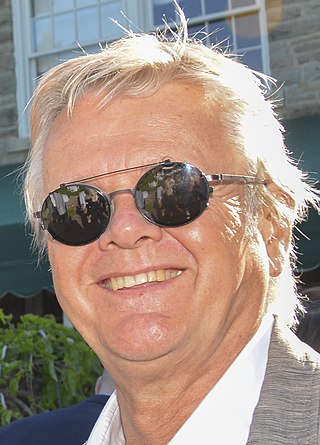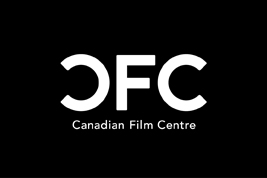Related Research Articles

The National Film Board of Canada is Canada's public film and digital media producer and distributor. An agency of the Government of Canada, the NFB produces and distributes documentary films, animation, web documentaries, and alternative dramas. In total, the NFB has produced over 13,000 productions since its inception, which have won over 5,000 awards. The NFB reports to the Parliament of Canada through the Minister of Canadian Heritage. It has bilingual production programs and branches in English and French, including multicultural-related documentaries.
Telefilm Canada is a Crown corporation reporting to Canada's federal government through the Minister of Canadian Heritage. Headquartered in Montreal, Telefilm provides services to the Canadian audiovisual industry with four regional offices in Vancouver, British Columbia; Toronto, Ontario; Montreal, Quebec; and Halifax, Nova Scotia. The primary mandate of the corporation is to finance and promote Canadian productions through its various funds and programs.

Cinema in Canada dates back to the earliest known display of film in Saint-Laurent, Quebec, in 1896. The film industry in Canada has been dominated by the United States, which has utilized Canada as a shooting location and to bypass British film quota laws, throughout its history. Canadian filmmakers, English and French, have been active in the development of cinema in the United States.

I've Heard the Mermaids Singing is a 1987 Canadian comedy-drama film written and directed by Patricia Rozema and starring Sheila McCarthy, Paule Baillargeon, and Ann-Marie MacDonald. It was the first English-language Canadian feature film to win an award at the Cannes Film Festival.

Comic Book Confidential is an American/Canadian documentary film, released in 1988. Directed by Ron Mann and written by Mann and Charley Lippincott, the film is a survey of the history of the comic book medium in the United States from the 1930s to the 1980s, as an art form and in social context.

The Outside Chance of Maximilian Glick is a 1988 Canadian film based on the novel by Morley Torgov. The film was shot in Winnipeg and Beausejour, Manitoba.

Joshua Then and Now is a 1985 Canadian film and a TV mini-series, adapted by Mordecai Richler from his semi-autobiographical novel Joshua Then and Now. James Woods starred as the adult Joshua, Gabrielle Lazure as his wife, and Alan Arkin as Joshua's father. It was directed by Ted Kotcheff who had previously directed Richler's The Apprenticeship of Duddy Kravitz.

Perfectly Normal is a Canadian comedy film directed by Yves Simoneau, which premiered at the 1990 Festival of Festivals, before going into general theatrical release in 1991. Simoneau's first English-language film, it was written by Eugene Lipinski and Paul Quarrington.

Sturla Gunnarsson is an Icelandic-Canadian film and television director and producer.
The Academy of Canadian Cinema & Television's 20th Gemini Awards were held on November 19, 2005, to honour achievements in Canadian television. The awards show, which was co-hosted by several celebrities, took place at the John Bassett Theatre and was broadcast on Global.
Alliance Films was a Canadian motion picture distribution and production company.
The Academy of Canadian Cinema & Television's 14th Gemini Awards were held on November 7, 1999, to honour achievements in Canadian television. The awards show, which was hosted by Rick Mercer, took place at the Metro Toronto Convention Centre and was broadcast on CBC Television.

The Canadian Film Centre (CFC) is a charitable organization founded in 1988 by filmmaker Norman Jewison in Toronto, Ontario, Canada. Originally launched as a film school, today it provides training, development and advancement opportunities for professionals in the Canadian film, television and digital media industries, including directors, producers, screenwriters, actors and musicians.
The Champions is a three-part Canadian documentary mini-series on the lives of Canadian political titans and adversaries Pierre Elliott Trudeau and René Lévesque.
The Academy of Canadian Cinema & Television's 5th Gemini Awards were held on December 4, 1990 to honour achievements in Canadian television. The awards show took place at the Metro Toronto Convention Centre and was broadcast on CBC Television.
The Academy of Canadian Cinema & Television's 9th Gemini Awards were held on March 6, 1994, to honour achievements in Canadian television. The awards show, which was hosted by Albert Schultz and Valerie Pringle, took place at the Metro Toronto Convention Centre and was broadcast on CBC Television.

François N. Macerola was a Canadian lawyer and film executive. He held a number of senior positions with the National Film Board of Canada and Telefilm Canada.
The Canadian federal budget for fiscal year 2012–13 was presented to the House of Commons of Canada by Finance Minister Jim Flaherty on 29 March 2012. Among the most notable elements of the federal budget were changes to Old Age Security and a reduction of the budget for the Canadian Forces and the Canadian Broadcasting Corporation.
Deadly Currents is a Canadian documentary film, directed by Simcha Jacobovici and released in 1991. The film explores the Israeli–Palestinian conflict, profiling various people on both sides of the dispute.
A Rustling of Leaves: Inside the Philippine Revolution is a 1988 Canadian documentary by Nettie Wild about the political upheaval in the Philippines following the fall of Ferdinand Marcos and the People Power Revolution.
References
- ↑ "Diplomatic ambiguity". The Globe and Mail , September 12, 1991.
- ↑ "Canadians' film Diplomatic Immunity was nine years in planning". Montreal Gazette , July 20, 1990.
- ↑ Posner 1993, p. 94-95.
- ↑ Posner 1993, p. 95-96.
- ↑ Posner 1993, p. 96-97.
- ↑ Posner 1993, p. 98.
- ↑ Posner 1993, p. 98-100.
- ↑ Posner 1993, p. 100-102; 105.
- ↑ Posner 1993, p. 102.
- ↑ Posner 1993, p. 109.
- ↑ Posner 1993, p. 109-110.
- 1 2 Posner 1993, p. 110.
- ↑ Posner 1993, p. 110-111.
- ↑ Posner 1993, p. 111-112.
- ↑ Posner 1993, p. 112-113.
- ↑ Posner 1993, p. 113.
- ↑ "After 9 years, 40 scripts cameras roll in Mexico". Toronto Star , July 18, 1990.
- ↑ Posner 1993, p. 111.
- 1 2 Posner 1993, p. 114.
- ↑ Posner 1993, p. 114-115.
- ↑ Posner 1993, p. 115.
- ↑ Posner 1993, p. 115-116.
- ↑ Posner 1993, p. 106-108.
- ↑ Posner 1993, p. 117-118.
- ↑ Posner 1993, p. 118-119.
- ↑ Posner 1993, p. 119-121.
- ↑ Posner 1993, p. 121.
- ↑ "Black Robe leads Genie nominees". Hamilton Spectator , October 10, 1991.